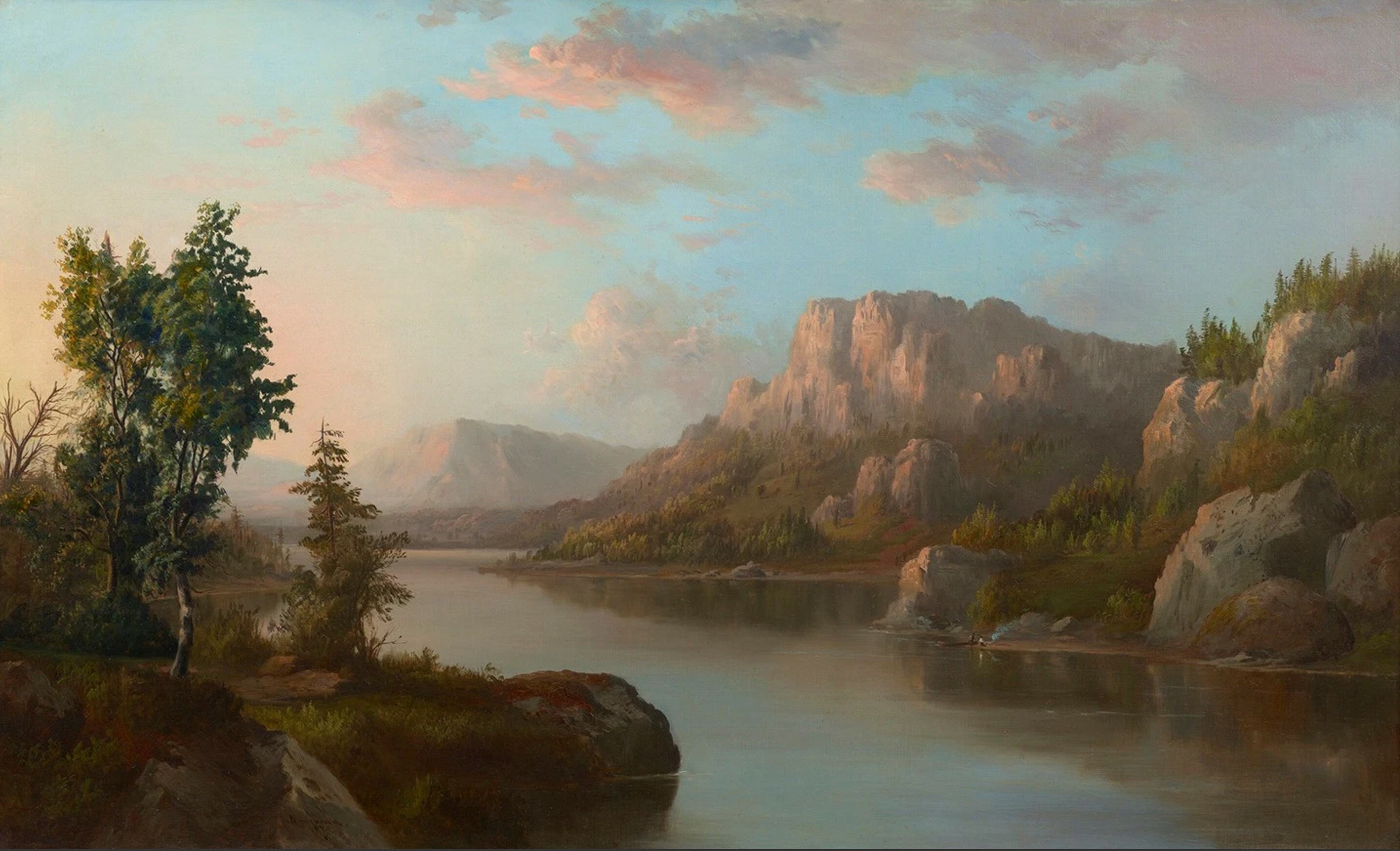ABOUT THE EXHIBITION
New Acquisition: Robert S. Duncanson, "Landscape," 1870
See the NBMAA's newest acquisition, Robert S. Duncanson's Landscape, 1870, made possible through a generous multiyear grant from the Robert C. Vance Foundation.
Robert S. Duncanson is considered a member of the second generation of Hudson River School painters and is celebrated for his idyllic pastoral scenes of peaceful rivers and verdant mountains. Successful during his lifetime, he was known in the 1800s by American press as the “best landscape painter in the West,” and London newspapers hailed him as an equal to his British contemporaries. Born a freedman in Seneca County, NY, in 1821 to mixed-race parents, Duncanson moved to the prosperous city of Cincinnati in 1840 to pursue a career in the arts, and he taught himself by painting from nature and by copying reproductions of works by Hudson River School masters. In the late 1840s, he befriended local landscape painters Worthington Whittredge (1820-1910) and William Louis Sonntag (1822-1900), with whom he took numerous sketching trips, including a European Grand Tour with Sonntag in 1853. In the ensuing years, Duncanson traveled throughout North America and Europe, exhibiting and selling work with great success, despite being excluded from many of the expositions in America that his white peers could participate in. His paintings commanded up to $500 per work—a very high sum at the time. Duncanson died at the age of 51, and while his work fell into obscurity for many decades, he is now recognized as a premier 19th-century landscape artist, who broke barriers and paved the way for landscape painters and Black artists for generations to follow.
Landscape, 1870 is a particularly extraordinary example of Duncanson’s output, given its exceptional condition, size, supporting documentation, and art historical importance. In 2004, Duncanson scholar Joseph D. Ketner wrote about Landscape, 1870: “The serene, wilderness landscape is one in a series of ambitious works that Robert Duncanson created in his Cincinnati studio in the late phase of his storied career. The painting exemplifies the artist’s vision of the picturesque beauty of the North American landscape."
The NBMAA’s 19th-century Hudson River School landscape paintings are among the Museum’s most celebrated treasures and have long been considered a strength of our collection of American art. Thomas Cole’s The Clove, Catskills, ca. 1829; Frederic Church’s West Rock, New Haven, 1849; and Albert Bierstadt’s Seal Rock, c. 1872-87, among others, document and romanticize the American wilderness and settlement in the 1800s, a time of great change across the nation.
Within the context of NBMAA’s 19th-century landscape gallery, Duncanson’s work will introduce important insights into relationships and opportunities that existed across the network of artists represented. Denied access to formal art training due to his race, Duncanson taught himself by studying Thomas Cole’s work. Landscape, 1870 therefore demonstrates Cole’s legacy and impact on second generation Hudson River School painters, as well as Duncanson’s talent and resolve to become an artist despite the lack of formal education. Moreover, Duncanson’s friendship with Worthington Whittredge and William Sonntag, both represented in NBMAA’s collection, reveals exchanges of influence among artists of the 1800s, who worked, studied, and shared travels together across the American landscape and abroad. Finally, Duncanson’s story is one of inspiration and determination to pursue and achieve one’s artistic aspirations despite significant obstacles and to create pathways toward success for generations of artists to come.
Related Programming
Robert S. Duncanson and the Hudson River School | Melinda and Paul Sullivan Distinguished Lecturer Eleanor Harvey, Senior Curator, Smithsonian American Art Museum
Thursday, February 16, 5 p.m.
